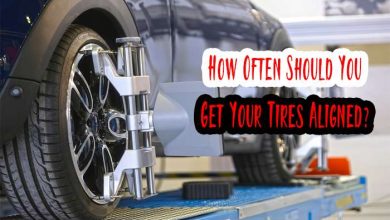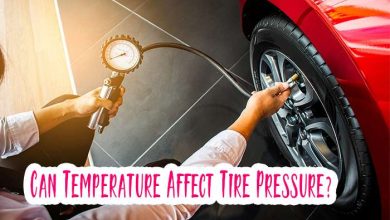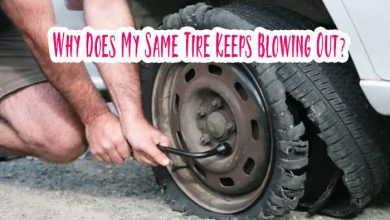Can You Pump a Car Tire with a Bike Pump? Expert Guide
As a seasoned tire expert, I understand the confusion surrounding whether you can pump a car tire with a bike pump. In this comprehensive guide, I will shed light on this topic and provide all the information you need to make an informed decision.
Maintaining the right tire pressure is crucial for your safety on the road, and I’m here to show you how a bike pump can play a role in it.
Yes, you can pump a car tire with a bike pump, but it will take a lot of effort and time. Car tires hold a lot more air than bike tires, so you will need to pump for several minutes to inflate a flat car tire.
The Importance of Proper Tire Pressure
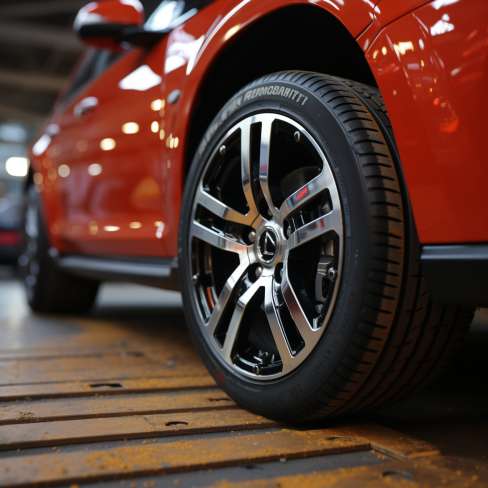
Before diving into the specifics, let’s understand why maintaining the correct tire pressure is vital.
Proper tire pressure:
- Ensures Safety: Adequate tire pressure enhances your vehicle’s stability and handling, reducing the risk of accidents.
- Improves Fuel Efficiency: Well-inflated tires reduce rolling resistance, saving you money on fuel.
- Extends Tire Life: Correct pressure prevents uneven wear and tear, prolonging your tire’s lifespan.
- Enhances Comfort: It provides a smoother and more comfortable ride.
Types of Bike Pumps
Bike pumps come in different types, and each serves a unique purpose. Understanding them will help you determine whether you can use one for your car tire.
1. Floor Pump
A floor pump, also known as a track pump, is a high-capacity pump ideal for inflating bike tires quickly. It’s unsuitable for car tires due to the substantial difference in air volume.
2. Hand Pump
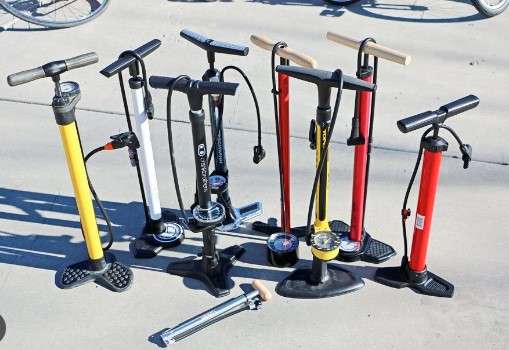
Hand pumps are smaller, portable, and handy for on-the-go bike tire inflation. While not ideal for car tires, they can work in emergencies to provide minimal inflation.
3. Mini Pump
Mini pumps are ultra-portable and can fit in your pocket. They are primarily designed for bike tires and are impractical for car tire inflation.
4. CO2 Inflators
CO2 inflators are compact devices that use compressed carbon dioxide to inflate bike tires. They are not suitable for car tires.
Can You Pump a Car Tire With a Bike Pump?
Yes, you can pump a car tire with a bike pump, but it will take a lot of effort and time. Car tires are much larger than bike tires, requiring more inflated air. Most bike pumps are not designed to handle the high pressure required for car tires.
If you do need to use a bike pump to inflate a car tire, here are some tips:
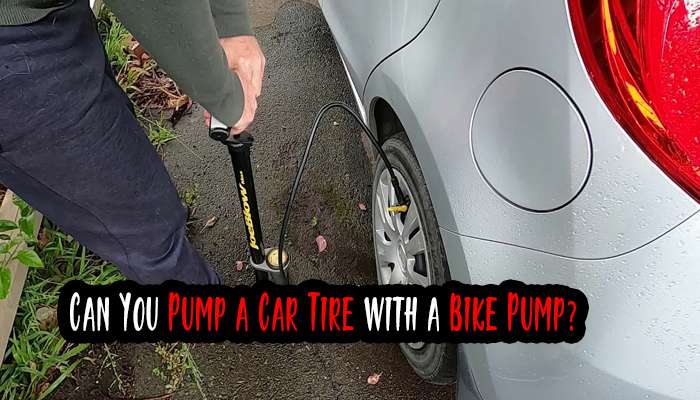
- Make sure your bike pump has a pressure gauge. This will help you avoid overinflating the tire.
- Start by pumping the tire slowly. This will help prevent the pump from overheating.
- Take breaks often. Pumping a car tire with a bike pump can be tiring.
- Be careful not to overinflate the tire. Check the tire pressure regularly and stop pumping when the recommended pressure is reached.
It is also important to note that not all bike pumps are compatible with car tires. Some bike pumps have a different valve type than car tires. If you are unsure if your bike pump is compatible with car tires, check the manufacturer’s instructions.
Steps to Pumping a Car Tire with a Bike Pump
Now that we’ve established that it’s possible, here’s a step-by-step guide on how to inflate a car tire with a bike pump:
Step 1: Check Your Bike Pump
Ensure your bike pump has a Schrader valve or the necessary adapter to fit your car tire valve.
Step 2: Remove Valve Cap
Take off the valve cap from the car tire.
Step 3: Connect the Pump
Attach the pump securely to the car tire valve, ensuring no air leakage.
Step 4: Begin Inflation
Start pumping air into the car tire. This will take time, so be patient and persistent.
Step 5: Monitor Pressure
Use a pressure gauge to monitor the tire pressure as you inflate. Ensure it reaches the recommended psi for your car.
Step 6: Recheck and Adjust
Double-check the pressure after inflation and make any necessary adjustments. Avoid overinflating.
Safety Precautions
Inflating a car tire with a bike pump is possible, but it’s essential to follow some safety precautions:
- Don’t Overinflate: Overinflating can lead to tire blowouts, so stay within the recommended pressure range.
- Check the Pump’s Pressure Rating: Ensure your bike pump can handle the pressure required for your car tire.
- Use a Pressure Gauge: Regularly check the tire pressure to avoid exceeding the recommended psi.
- Seek Professional Help: If in doubt or if your bike pump struggles to inflate the tire, it’s best to consult a professional or use a proper tire inflator.
- Emergency Use Only: Bike pumps are not a long-term solution for car tires; they are meant for emergencies.
Benefits and Limitations of Using a Bike Pump
Benefits
- Portability: Bike pumps are lightweight and portable, making them handy tools for emergency situations.
- Cost-Efficiency: If you already own a bike pump, using it for your car tire can save you from purchasing additional equipment.
- Versatility: With the right adapter, your bike pump can serve a dual purpose, inflating bike and car tires.
Limitations
- Time-Consuming: Inflating a car tire with a bike pump can be time-consuming due to the smaller air volume and lower pressure output.
- Pressure Constraints: Most bike pumps can’t reach the high psi required for car tires.
- Emergency Use Only: Using a bike pump for your car tire should be reserved for emergencies and not as a regular practice.
- Wear and Tear: Continuous use of a bike pump for car tires can strain the pump, potentially affecting its durability.
Frequently Asked Questions (FAQs)
Can I use any bike pump for my car tire?
Not all bike pumps are suitable for car tires. You must ensure your bike pump has a Schrader valve or the appropriate adapter to fit your car tire valve.
How long does inflating a car tire with a bike pump take?
Inflating a car tire with a bike pump can be time-consuming, often taking 10-20 minutes or more, depending on the pump’s capacity and the desired tire pressure.
What if my bike pump doesn’t fit the car tire valve?
You can purchase an adapter separately if your bike pump doesn’t fit the car tire valve. Ensure the adapter is compatible with your pump and the car tire valve.
Is it safe to use a bike pump for emergency situations?
Using a bike pump in emergencies is safe if you follow recommended pressure guidelines and use it as a temporary solution until you can access proper tire inflation equipment.
How much psi can a bike pump produce?
The psi a bike pump can produce varies depending on the pump’s design and quality. Some high-end models can reach higher psi, but most are designed for the lower pressure requirements of bike tires.
Conclusion
Inflating a car tire with a bike pump is possible but has limitations and safety considerations. It’s a handy solution in emergencies, but it is best to invest in a proper tire inflator for regular maintenance.
Always prioritize safety, monitor tire pressure, and follow guidelines to prevent overinflation or potential hazards.
Maintaining the right tire pressure is crucial for your safety and vehicle performance. Understanding the tools and techniques is essential to ensure a smooth and safe ride, whether inflating bike tires or car tires.
References
Glossary
- Schrader Valve: A type of tire valve commonly used in car tires, easily recognizable by its cylindrical shape.
- PSI (Pounds per Square Inch): A unit of pressure measurement commonly used for both bike and car tires.
